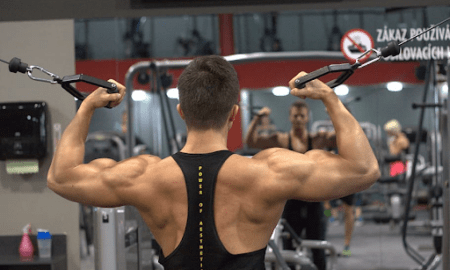Q. Which are better, regular back extensions or those performed on an incline back-extension bench? And can either of them take the place of reverse hypers?
A: To answer the first question, both types of back extensions have their advantages and disadvantages. With regular back extensions it’s easier to hyperextend the spine. If you have a posture characterized by an excessive forward tilt of the pelvis, hyperextension may cause back pain. Also, the incline bench allows for a greater range of motion, although that advantage brings with it the possible disadvantage of rounding the back at the start of the movement, which is also harmful to the spine.
Now let’s talk about the training effects. Gravity exerts its effects downward, not horizontally. With a regular back extension that means you will feel the greatest resistance at the finish of the lift, when the torso is parallel to the floor. With an incline back-extension bench you get the greatest resistance at the midpoint (again, with the torso parallel to the floor). So a balanced program will include both variations.
Regarding the second question, back extensions tend to affect more of the middle part of the spine, and reverse back extensions affect more of the lower spine. If you are stronger in the middle of the spine than the lower part, as most people are, you should focus more on reverse hypers until you have achieved structural balance. So it’s not that one type can replace the other but that these exercises complement each other.
I cannot leave this discussion without noting how important it is to strengthen the erector spinae. Strengthening those muscles creates what is called an “irradiation effect” that increases the strength of other muscle groups. That means if you go on a program that emphasizes back extensions, you might find that you will also improve your performance on overhead presses and squats. As for sets and reps, consider that the erector spinae contain both fast-twitch and slow-twitch muscle fibers. So, to fully develop the muscles, you need to do workouts that emphasize low reps as well as those that emphasize higher reps.
Editor’s note: Charles Poliquin is recognized as one of the world’s most suc-cessful strength coaches, having coached Olympic med-alists in 12 different sports, including the U.S. women’s track-and-field team for the 2000 Olympics. He’s spent years researching European journals (he’s fluent in English, French and German) and speaking with other coaches and scientists in his quest to optimize training methods. For more on his books, seminars and methods, visit www.CharlesPoliquin.com. IM




















You must be logged in to post a comment Login